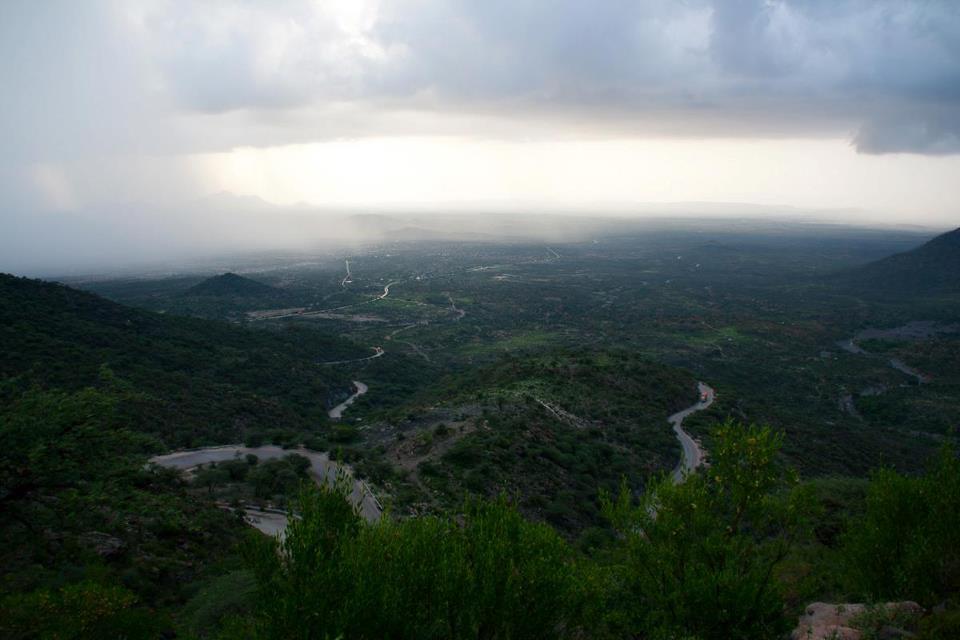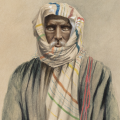-
Content Count
112 -
Joined
-
Last visited
-
Days Won
1
Content Type
Profiles
Forums
Calendar
Everything posted by Aroori
-
This was inevitable, I just hope the two Colonels and saleebaan gaal come to their senses and don't do a 1994 part two to safe face.
-

Ra'iisul wasaare position is being replaced
Aroori replied to Miskiin-Macruuf-Aqiyaar's topic in Politics
Exactly, through time those two parties will resemble the demopublican uniparty of uncle Sam. Working for the interest of business conglomerates, tribal, and religious sects instead of the poor average somali person. -
The business community are members of the waddani party according to kulmiye and saleebaan.
-
lol, jinni ninkii keenaa saara. I don't think saleebaan will EVER stand up to muuse biihi.
-
In my opinion waddani will accept the ururo election but as Xaaji xunjuf and beesha HA believes; muuse biihi shouldn't hold an election of any type whatsoever. Xaashi and gabboose voiced their concerns recently, with gabboose blindly blaming the NEC when in fact they have no power under the current admin. The old guard of kulmiye want another extension for muuse biihi even when the two years given to him by the guurti is up. basically an extension of at least 4 years overall with last year being wasted as preparations for an election thus completing an illegitimate 2nd term.
-
President muuse biihi will not be coming back, if that were the case then the old guard of kulmiye will not be looking for a candidate outside of the party and they have plenty of GX candidates. No one in kulmiye is electable in a presidential election. If the political organization's elections are held, everyone knows it'll be waddani, kulmiye, and kaah then onto a presidential election. (In this scenario cirro is likely to win as deciding votes are from awdal and other non Somalilanders which overwhelmingly are in cirro's pocket even the gabooye) If the presidential election is first then ina xaashi is almost certainly supporting waddani as there are already talks between him and cirro.(in this scenario cirro is likely to win) The only way ina xaashi supports kulmiye is if he is the presidential candidate. (in this scenario, hashi is the favourite to win the presidency) If ina mooge is kulmiye's presidential candidate and presidential elections are first then hashi's support is behind waddani 100% which makes cirro the clear winner among the 3 GX candidates. Majority of HJ+SMRON+GX is unbeatable. if ina mooge is kulmiye's presidential candidate and the three contesting parties are Kaah Kulmiye and waddani, then awdal is the deciding factor again and the winner is clear. There is no single scenario in which biihi will be back as a 2nd term president in Somaliland. It is either Xaashi or cirro as it stands.
-
I am well versed in the tactics of kulmiye, it's just that the story of ina mooge joining them has no merit whatsoever. No sane politician will ever touch the sinking ship with a million foot pole. Even if ina kaahin relinquishes his turn to lead kulmiye in the next presidential election; ina mooge alone will not bring enough votes. It's almost certain at this point the next ruling party of Somaliland will not be kulmiye even if they dig Xaaji Cabdikariin Xuseen from the grave (Allah Yarxamu) and appoint him as a candidate. Fact is; GX are 98% in support of waddani, HJ are 95% behind ina xaashi's kaah, and HA are 100% in favour of kulmiye but also awaiting muse Bihi's decision on running again. The dynamics of the upcoming elections in Somaliland is not as simple as some people say, ina xaashi is the wild card here and most certainly the side that will decide who will be victorious in the near future if not himself ascend to the throne, but one thing is for sure; ol' grand kulmiye is done and dusted (mark my words).
-
Where did this come from? I live in Hargeisa and it is widely known ina mooge is not interested in kulmiye or being a president at the moment, abdikareem wants to finish his term as a mayor and transform Hargeisa before committing to any other political undertaking. Is it because of candiraxmaan dheere's interview with crazy horyaal TV?
-
Far from a teenager my friend, I am just at awe at the nonsense you are spewing. I was born and bred in SL, i've never been outside of it except for the breif period of studying in uni. Is this Cabdiraxmaan Dheere's handle .
-
Is Somaliland a democracy or an ethnocracy?
-
Exactly, I am amazed at @Game changer's way of thinking. No one has the right or ability to prop up a chosen one or deny people's wish in SL politics.
-
How is this different from puntland's maxamuud saleban monopoly? is Somaliland no longer a democracy? Who said it is a certain clan's right to claim the presidency at any moment in Somaliland's history? If cirro has allegedly more potential votes than other candidates who has a right to prevent him from achieving such a goal through illegal means? Caqliga kugu jiraa yaraa.
-
Somaliland is a democracy, every citizen ( including darawal, xaashi, cirro, faysal, gaboose.....etc) has the right to run for presidency, and the ultimate decision of who goes to madaxtooyada rests with the people. That includes the incumbent, why do you think he is unelectable? Muuse biihi can't and shouldn't select who runs as the presidential candidate for kulmiye, it is a job for golaha dhexe. Why should the presidential candidate of kulmiye come from cirro's clan by the way?
-
Easy there.... harming an old fragile fart is nothing to be desired. I agree with you; guurti should be replaced asap, since siilaanyo's admin; they have been nothing but a pawn of the presidency and a hindrance to political proceedings of checks and balances. They are nothing more than a leash to control the actual representatives of the people at this point.
-
He is also sending an indirect message to the opposition that there is no election anytime soon. People might think he is senile but he is part of the problem, a calculated balaayo ooge.
-
Dude, I know him personally. He ain't dead. There are indeed many dead soldiers in the picture but he ain't one of them.
- 286 replies
-
- somaliland
- somalia
-
(and 1 more)
Tagged with:
-
How many of the guys in the picture are doctors? I believe he is the only doctor among the lot, and the fact whomever made the picture put him in twice from two different angles says a lot about said list.
- 286 replies
-
- somaliland
- somalia
-
(and 1 more)
Tagged with:
-
The guy above muuse biixi and the one immediately to his left are the same guy, he is a medical doctor and never went to sool or fired a bullet in las anod. He was in Addis Ababa not a week ago.
- 286 replies
-
- somaliland
- somalia
-
(and 1 more)
Tagged with:
-
Bingo..... It is jello between the ears. Why would I care about water catchment/harvesting when I can brag about how laandheere I am in fadhi-ku-dirir sessions, who cares about the wellbeing of my society, I'd rather put all of my energy on how our qabiil might dominate yours in the coming pseudo elections. There is no hope for the Somalis in Somalia.
-
This kind of mentality is what has made the situation what it is today, no one can force another human to submit to their will. There will unfortunately be many innocent casualties in this conflict but let me assure you; people of las anod will not be beaten to accept SL by force, no matter how long it takes they will prevail in the end.
-
Kenya: Alert as Kenya Awaits Hostile Ruling in Somalia Border Row By Alex Ndegwa Kenya is on high alert ahead of next month's judgment on the Indian Ocean boundary dispute with Somalia, which is expected within government circles to be adverse. The International Court of Justice (ICJ) will announce the decision on October 12, ending a protracted case between the two neighbours that the war-torn Horn of Africa nation filed in 2014. Its verdict is final. The timing of the judgment - it coincides with the 10th anniversary of Kenyan troops storming Somalia to fight the al-Shabaab terrorists - is also being considered a "slap in the face". The Nation has learnt Kenya will not accept a hostile ruling and a decision has been taken within the highest level of government to defy the court. Disregarded: Some of the court's verdicts have in the past been disregarded, including by the US, which in 2018 rejected the court's order that sanctions against Iran should not include humanitarian aid or civil aviation safety. And in 1986, the US had also attacked the court after it ruled America owed Nicaragua war reparations. Kenya has also vowed not to accept what it considers "an illegitimate process" by an international entity. "We are proceeding on the assumption that the verdict will be adverse. The manner in which the court conducted itself when dealing with Kenya, including rejecting a string of merited applications, is a key pointer," a senior Kenyan official told Nation yesterday. The official went on: "A lot is being done, including security-wise. It's a matter with huge national security implications. A nation must guarantee the security and wellbeing of its people." According to the official, even what would be considered a compromise by the court would involve surrender of a part of the territory, which is unacceptable to Kenya. Treated unfairly: Kenya contends the court treated it unfairly by rejecting a string of merited applications, including one asking that judge Ahmed Yusuf, a Somali, should step down over conflict of interest. Justice Yusuf had been at the helm of the court since 2018 and was replaced as president of the ICJ in February by judge Joan Donoghue from the United States. Kenya has also alleged some world powers with interests in vast minerals within the contested area have been meddling with the case to ensure Somalia, which attempted to sell some oil blocks at an international auction in London, UK, takes over the area. Nairobi boycotted the ICJ's public hearings, leaving Somalia to argue its case in one-sided proceedings that closed in March in The Hague. Bias: Judge Donoghue then announced that even without Kenya's participation, the court would rely on previous documents filed by Kenya, which accuses the world court of bias. Before Kenya notified the court of its withdrawal from the case on March 11, it had applied to be allowed to submit new evidence that has been "missing" and is "highly relevant". "Most particularly, the Republic of Somalia ("Somalia"), while asserting that its 1988 Maritime Law's reference to a 'straight line' refers to an equidistance line, conveniently failed to produce the map included in the law," Kenya stated in court papers filed in February. "This Somali map, which the court should reasonably expect Somalia to produce, is critical since it has the potential of undermining Somalia's entire claim ... Whatever Somalia's missing map depicts is categorically not an equidistant line." Kenya argued that any consideration of the equidistant claim would set a dangerous precedent as it would not only reward Somalia's belligerent conduct but also had the potential of disturbing already established boundaries, triggering disputes including with neighbouring Tanzania that could escalate to South Africa. The dispute: As adjacent coastal states facing the Indian Ocean to the east-south east, the maritime claims of Somalia and Kenya overlap, including in the area beyond 200 nautical miles. The parties disagree about the location of the boundary in the area where their maritime entitlements overlap, according to court records. Somalia, which filed the case in 2014, argues the maritime boundary between the parties in the territorial sea, exclusive economic zone (EEZ) and continental shelf should be determined in accordance with the United Nations Convention on the Law of the Sea (Unclos) Articles 15, 74 and 83, respectively. Article 15 of Unclos states: "Where the coasts of two states are opposite or adjacent to each other, neither of the two states is entitled, failing agreement between them to the contrary, to extend its territorial sea beyond the median line every point of which is equidistant from the nearest points on the baselines from which the breadth of the territorial seas of each of the two states is measured." But there is a rider. "The above provision does not apply, however, where it is necessary by reason of historic title or other special circumstances to delimit the territorial seas of the two states in a way which is at variance therewith." Article 74 states: "The delimitation of the exclusive economic zone between states with opposite or adjacent coasts shall be effected by agreement on the basis of international law, as referred to in Article 38 of the Statute of the International Court of Justice, in order to achieve an equitable solution." The same provision applies under Article 83 with respect to the delimitation of the continental shelf. In both instances, the Articles provide where there is an agreement in force between the states concerned, questions relating to the delimitation of both the EEZ and continental shelf shall be determined in accordance with the provisions of that agreement. Equidistance principle: Somalia's argument is based on the use of the equidistance principle as the method of determining states' maritime boundaries. Accordingly, Somalia argues, in the territorial sea, the boundary should be a median line since there are no special circumstances that would justify departure from such a line. With regard to the EEZ and continental shelf, Somalia contends, the boundary should be established according to the three step process that the court has consistently employed in its application of Articles 74 and 83. But Kenya's case is that a boundary along the parallel of latitude has developed through the consent of Somalia since 1979. Since Somalia never protested for that long, Kenya contends that a boundary was established by a tacit agreement between the two states. Straight line: Accordingly, Kenya's position on the maritime boundary is that it should be a straight line emanating from the states' land boundary terminus, and extending due east along the parallel of latitude on which the land boundary terminus sits, through the full extent of the territorial sea, EEZ and continental shelf, including the continental shelf beyond 200 nautical miles. Kenya measures the breadth of its territorial sea and EEZ from a series of straight baselines covering the full length of its coast. These baselines were first declared in the 1972 Territorial Waters Act and have been amended from time to time. Kenya's submission to the Commission on the Limits of the Continental Shelf (CLCS) is that the outer limit of its continental shelf lies fully 350m from its coast. Kenya asserts that all its activities including naval patrols, fishery, marine and scientific research as well as oil and gas exploration are within the maritime boundary established by Kenya and respected by both parties since 1979. However, in 2014, shortly before filing its case with the ICJ, Somalia claimed a maritime boundary along an equidistance line, ignoring the 35-year recognition of the maritime boundary along a parallel of latitude. Court decision: The court will determine, on the basis of international law, the complete course of the single maritime boundary dividing all the maritime areas appertaining to Somalia and to Kenya in the Indian Ocean, including in the continental shelf beyond 200 nautical miles. Also, the ICJ judges will determine the precise geographical coordinates of the single maritime boundary in the Indian Ocean. Kenya: Alert as Kenya Awaits Hostile Ruling in Somalia Border Row ALLAFRICA.COM Kenya is on high alert ahead of next month's judgment on the Indian Ocean boundary dispute with Somalia, which is expected within government circles to be adverse.





